Snow-holing in Scotland has a long established history in both our own winter mountains and further afield. Over the last 10 years, snow-holing has grabbed the attention of the media and the viewing public. This exposure has introduced and encouraged people happy enough to pay for the experience. Andy Bateman* of Scot Mountain Holidays asks, should we assume what works in other mountains will work well in our own?
Likely Ambient Temperature
With the seasonal minimum in some recent Scottish winters approaching -20oC and an official record of –27.3oC, you would be forgiven for assuming you’d might be sleeping in temperatures approaching those of Arctic Norway.
Yet Cairngorm (1245m) has only ever recorded around half of this at –16.5oC (12th Jan 1987). Supporting this, Coire Cais Ski Base Station (630m) has a low of -9.2oC. The residents of nearby Nethybridge (210m) though, claimed the mercury dropped to -31.3oC on 10th January 1982. Satellite evidence suggests they were right!
The vital bit of information on these -30-ish lows are that they were all recorded during temperature inversions. The cold air flowed off the mountains and pooled in the valley bottoms where it cooled further whilst the mountain summits remained appreciably warmer. These record minima are in no way a reflection of the likely temperature you would find on our mountains. It’s not surprising when we’re never that far from a relatively warm sea in the UK!
So what temperature is likely when snow-holing in Scotland, let’s say, in the Cairngorms at around 1100m? The seasonal minimum for 900 m is usually around -8oC. At 1100 m this could translate to -10oC. Far more frequently winter temperatures at this height are around -5 and above. Our mountains simply don’t experience anything like the temperatures you might get in e.g. Arctic Norway.
Considering the warmer temperatures when snow-holing in Scotland, do we really need snow-hole features designed to capture warm air? Are sleeping platforms and cold air drains really necessary or should our aim be to lose the warm air?
Snow is a great insulator. A meter thickness in your roof and front wall is of vital importance in this regard. That is 20 cm of insulating snow both on the exterior and interior surfaces with 60 cm of well insulated structurally sound snow. Light penetrates to a depth of around 75 cm so if you see daylight, they’re getting too thin. It should also be borne in mind that a 1 m thick roof represents a considerable weight. It’s vital the front wall is adequately thick and strong enough to support the roof.
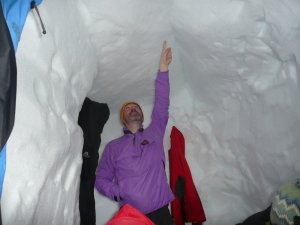
How high is that roof? Look at the apex centre.
Snow-hole sites by virtue of their high snow accumulation and steep slopes can be prone to avalanches. To be safe, you may need to pick a slope with a more gentle gradient and spend more time digging out the entrance. The majority of avalanches occur on slopes at or above 30 degrees. To maintain a 1 m thick roof, on a slope less than this, you’ll have to dig in a minimum 2+ horizontal meters from the top of the doorway before you start widening out the living area.
Avoid large areas of unsupported roof by keeping your snow-hole narrow. Aim for a depth of 2 body widths between the internal surfaces of the front and back walls.
This means you can create a relatively steep-angled apex ceiling which helps to avoid any drip points. Warm air can then be channelled towards the ventilation holes at the apex high points. In addition with it running the length of the snow-hole it increases the height with minimal snow removal giving everyone the opportunity to straighten their weary backs!
Importantly it also removes the unsupported dead weight from the ceiling. This is one of the most important aspects of snow-holing in Scotland. Although not mutually exclusive, removing the ceiling dead weight is of more importance to ceiling stability than temperature! Very few, experienced and inexperience alike, pay attention to removing the dead weight. I’ve managed to snow-hole once at +5 Deg C without any roof deformation! The roof of a snow-hole I constructed for the BBC Travel Show lasted through until around the 25th June!! The ceiling at that point was only a foot off the floor, but it hadn’t collapsed!! Every other snow-hole at that point was merely a hollow in the snow. As you create the apex be careful not to make the roof too thin. The strength of the roof is in it’s thickness.
Make sure there is good ventilation. My test is to regularly watch my breath. If it drifts off to one side it’s a good indication that ventilation is adequate. Cooking with pressure stoves in a poorly ventilated snow-hole is extremely dangerous due to the formation of toxic Carbon Monoxide. All pressure stoves work by first oxidising the fuel to Carbon Monoxide (CO) and then to Carbon Dioxide (CO2). The different colours in the flame indicate this. Irrespective of good ventilation a pan of icy water can have a severe quenching effect on the flame preventing combustion of the CO. Research for the British Antarctic Survey (BAS)** showed in heating a pan of icy water CO production could be significantly reduced by raising the pan supports higher above the flame. Snow-holers should acquaint themselves with the symptoms of CO poisoning.
To put this into perspective, I’m unaware of anyone in the last 25 years dying from CO poisoning whilst snow-holing in Scotland. I do know though, instructors who’ve attributed head aches to possible CO poisoning. It’s worth considering taking a small portable CO detector with you. In a snow-hole with a single entrance and no through air movement, ventilation may well be inadequate. Extinguish candles before you go to sleep as they also produce small amounts of CO.
Although the temperature may remain around 0oC you may well still be “injecting” appreciable heat energy into the snow pack. It takes considerable heat energy to turn snow at 0oC into water at 0oC so it will not be reflected in a temperature rise. It’s far more desirable that this heat energy drifts out of the doorways than being absorbed by the snow pack.
Make it large enough to stand up in. Large communal snow-holes are less prone to an abrupt temperature rise as they have better ventilation characteristics by virtue of having several entrances, etc. An entrance walled up with blocks in combination with an open doorway will often still allow plenty of ventilation.
Putting aside the dangerous scenario of cooking in a poorly ventilated snow-hole, I’ve never got up in the middle of the night to purely unblock a doorway for ventilation reasons. All the medical research I have seen (references below) doesn’t suggest there is any potential of becoming severely hypoxic in your sleep. Studies suggest sleep will become agitated, you will awake and in doing so get up and ventilate a stuffy snow-hole.
One potential hazard of digging a small snow-hole is you don’t have enough space to put the snow as you attempt to extricate yourself after a night of severe drifting. On one occasion I did have to tunnel out 1 ½ m before I hit the surface!
When it comes Scottish snow conditions, don’t underestimate how hard the snow can get. You will need a snow shovel with a metal scoop and a good snow saw. The sintering effects of strong sunlight and hard frosts of high pressure can make wind-slab snow astonishingly hard to dig. A good snow saw is often the only effective way to deal with this type of snow.
Many of the snow-hole sites are immediately adjacent to water courses. In addition, the snow pack often lasts well into the summer meaning there’s little opportunity for biological breakdown of human waste. If you do have to go you should do your business well away from the snow-hole site and far more preferably have some system to carry it out. Cairngorm Mountain’s Snow White Project has greatly improved the situation at the Cairngorm sites. All snow-holers coming to the Cairngorms are encouraged to use it.
The safety of a snow-holing in Scotland is often a reflected by the time it has taken to dig. I’m cautious about suggesting how long digging should take as it depends on a number of factors, not least the condition of the snow. From a “duty of care” perspective I feel a large communal snow-hole is much better than several separate small ones. I normally anticipate spending 4 to 5 hrs digging a 4 plus person snow-hole. I accept in soft snow conditions that this can possibly be shorter for a fit party of 2 each digging their own entrance.
With the vagaries of the winter weather, if done correctly Snow-holing is often the far safer option compared to a tented high camp in Scotland’s Winter Mountains.

* Andy holds the WML and IML awards and has over 20 years Mountain Leading experience. He has guided well over 30 commercial snow-holing trips in this time and although none of the mountaineering qualifications have a remit that covers snow-holing, he is one of the few guides deemed competent by HSE criteria of “relevant experience” to run snow-holing trips.
** British Antartic Survey helped in a BSc thesis. Available on request from andrew@scotmountainholidays.com
Medical references:
www.ncbi.nim.ni.gov/pubmed/18665947
www.ncbi.nim.ni.gov/pubmed/9340627
www.ncbi.nim.ni.gov/pubmed/8355417
www.ncbi.nim.ni.gov/pubmed/15265339
How to Stay Safe in the Scottish Winter Mountains: Essential Tips for Hiking and Climbing
Scotland’s winter hills offer unparalleled beauty and adventure, but venturing into this environment requires preparation and caution. The #ThinkWINTER campaign by the Mountaineering Council of Scotland aims to raise awareness about safety in winter conditions, offering practical advice to keep adventurers safe. With over 1,000 mountain rescues occurring annually across the UK, preparedness is crucial. Here’s how to ensure your trip is both enjoyable and safe.
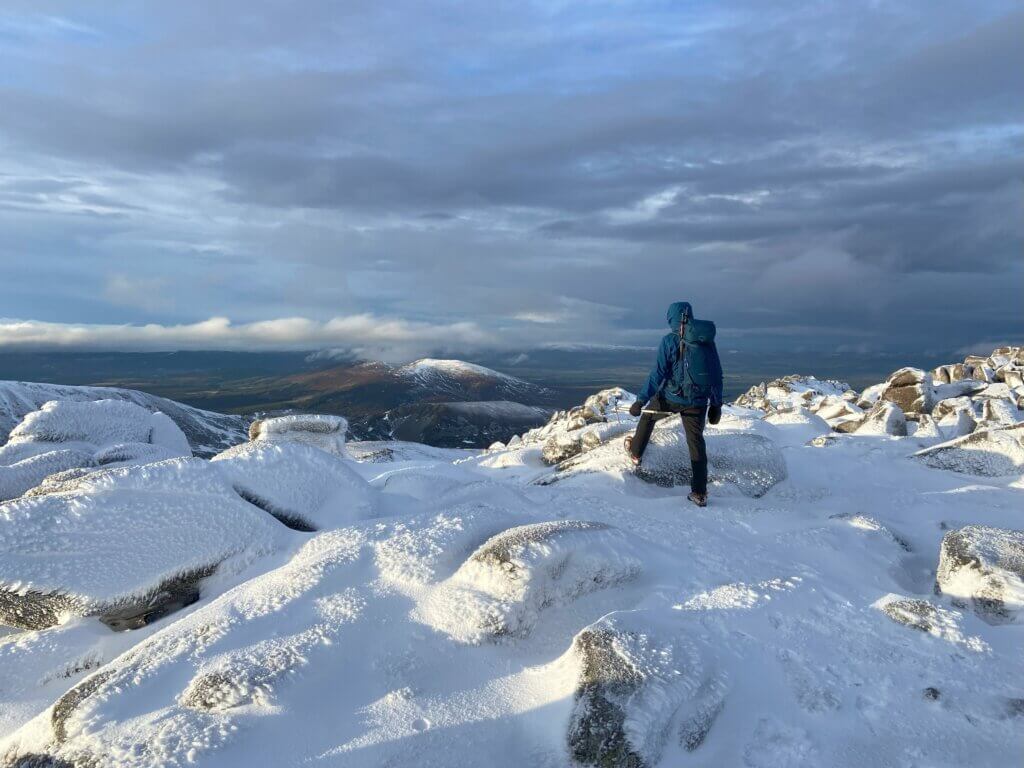
1. Comprehensive Planning
2. Weather and Avalanche Awareness
3. Clothing and Equipment
4. Skill Development

Test your limits, within your means
For those uncertain about navigating Scotland’s winter hills, guided trips provide a safe alternative. Scot Mountain Holidays offers guided hiking and climbing adventures, alongside accommodation, transport, and full catering. With their expert knowledge, you’ll experience the beauty of the Scottish Highlands safely and comfortably.
The #ThinkWINTER campaign encourages hikers and climbers to:
By adopting these practices, you can reduce your risk and enjoy your adventure responsibly. Remember, mountain safety isn’t just about you—it ensures rescue teams, often volunteers, aren’t unnecessarily called into dangerous situations.
Prepare wisely, respect the mountains, and embrace Scotland’s winter magic with confidence!
5 Reasons to Visit the Cairngorms in Winter
The Cairngorms in winter offer a completely different experience from the rest of the UK. Snow-covered peaks, quiet trails, and crisp mountain air make it an ideal destination for those looking to explore Scotland’s wild landscapes in the colder months. Whether you’re keen on winter walking, improving your mountain skills, or simply enjoying the peace and beauty of the Highlands, the Cairngorms have plenty to offer. Here are five reasons to visit:
The Cairngorms contain Britain’s highest and most extensive mountain plateau, giving them some of the most reliable winter conditions in the UK. Snow lingers well into spring, creating an environment more akin to Scandinavia than anywhere else in Britain. With Scot Mountain Holidays, you can explore this unique winter landscape safely, whether on foot, or even cross-country skis.
The Cairngorms offer some of the best winter walking and mountaineering in the UK. Unlike other mountain ranges, their vast, high-altitude terrain provides a real winter experience, with deep snow and ice often lasting for months. Whether you’re looking for a straightforward hill walk or something more technical, Scot Mountain Holidays can guide you through the best routes while ensuring you stay safe and build confidence in winter conditions.
It can be dangerous to get out into the hills in winter so it is highly recommended to take advantage of the plethora of local guides. You don’t want to be the reason the mountain rescue team are called out.
The Cairngorms are the top destination in the UK for learning winter mountain skills. With consistently snowy conditions and a variety of terrain, it’s the perfect place to learn how to use an ice axe, crampons, and navigate safely in winter. At Fraoch Lodge, we run winter skills courses to help hillwalkers and climbers develop the knowledge and confidence they need to enjoy the mountains in all conditions.
Learning the technical skills for both safe movement in the winter hills and whiteout navigation will eventually allow you go be independent in winter.
Winter in the Cairngorms offers some of the best wildlife watching opportunities in the UK. With the snow-covered landscape acting as a blank canvas, it’s much easier to spot elusive species like mountain hares, ptarmigan, red deer, and even golden eagles. Unlike more accessible national parks, the Cairngorms provide a real sense of remoteness, making wildlife encounters all the more special.
We can arrange winter wildlife trips for you or you can stay at Fraoch Lodge and arrange your own guide. We recommend either Speyside Wildlife or Malcolm at Arc Guiding. Malcolm is also a ski and mountain bike guide.
After a day exploring the wintery landscapes, there’s nothing better than returning to a warm, welcoming retreat. The Cairngorms offer a range of cosy accommodation, from traditional lodges to charming B&Bs & hostels. At Fraoch Lodge, we provide hearty home-cooked meals, a roaring fire, and a friendly atmosphere—perfect for unwinding and sharing stories of the day’s adventures. We also have a purpose built drying room for all your outdoor gear, complete with bar heaters (for a gentle heat under your boots) and a dehumidifier (to get rid of all that excess moisture).
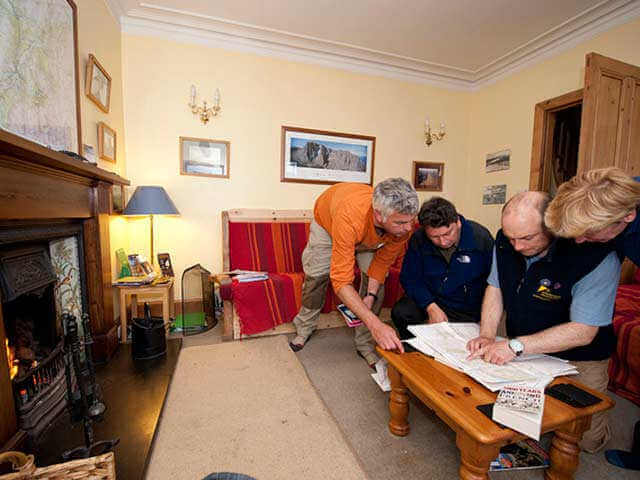
Enjoy the open fire and discussions in the lounge
Winter in the Cairngorms is a truly special experience, offering adventure, tranquillity, and the chance to connect with nature in its most magical season. Whether you’re keen to develop your skills, explore new landscapes, or simply soak up the beauty of Scotland in winter, there’s no better time to visit. If you’re looking for a guided experience or a welcoming base, Scot Mountain Holidays and Fraoch Lodge are here to help you make the most of your winter adventure.
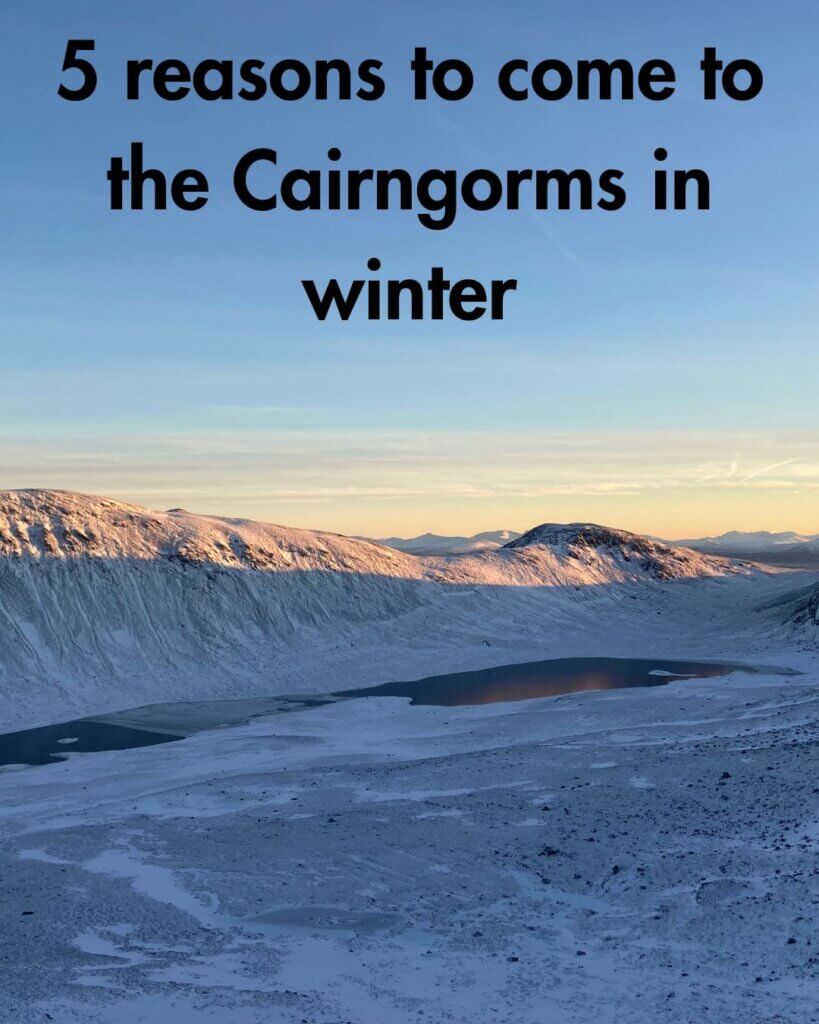
One of the most frequently asked questions from those joining our winter courses is: What if there is no snow? Although we can’t control the weather, we can almost guarantee there will be snow—especially on the high peaks during winter and early spring. However, for those still concerned, let us put your worries to rest.
The Cairngorms are home to Britain’s most permanent snow beds, some of which persist well into July or even early August. The high altitude and vast plateau of the Cairngorms make them a natural snow trap. Even in milder winters, the unique topography and wind patterns often ensure that snow is captured and retained in key areas. According to a study by the Royal Meteorological Society, the Cairngorm plateau experiences snow coverage for an average of 76 days per year, making it one of the most reliable locations for snow in the UK.
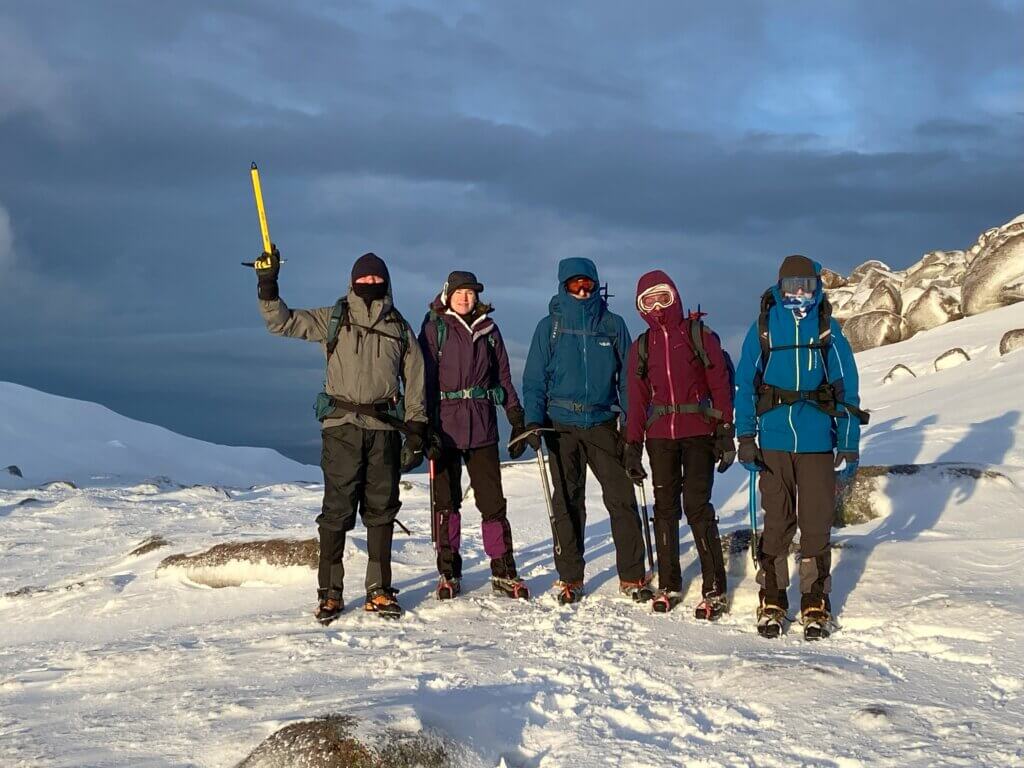
If, for some reason, the winter is unusually mild and snowfall is limited, it’s not the end of the world. Winter Skill courses with Scot Mountain Holidays are designed with flexibility in mind. Snow is just one of three critical factors that influence the course—the other two being wind (which facilitates snow drifting) and the expansive Cairngorm plateau (which helps to capture and hold snow).
Even if snow levels are lower, the skills taught during our courses remain relevant. In fact, hard, icy snow that forms after a thaw and subsequent freeze is often ideal for teaching crampon techniques. Fresh snow, while beautiful, doesn’t always add additional value to winter skills training.
In the 25 winter seasons that Scot Mountain Holidays has been running Winter Skills courses and hiking holidays, no course has ever been cancelled due to a lack of snow. This incredible track record highlights the reliability of the Cairngorms as a winter training destination.
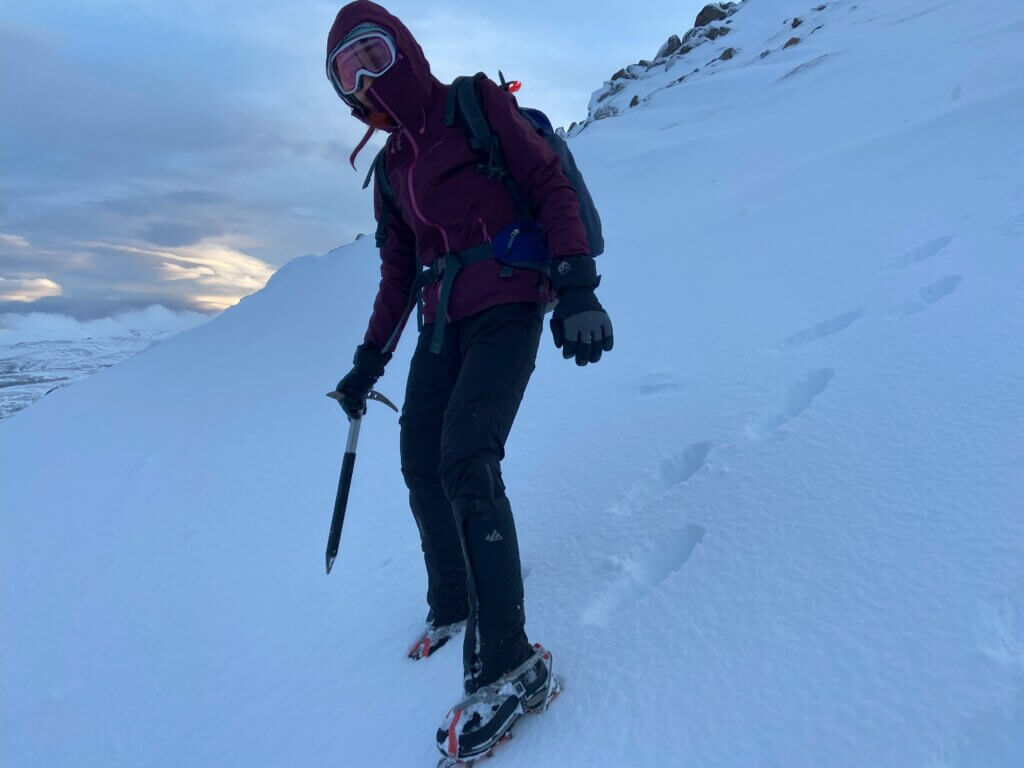
While snow is a strong likelihood on the peaks where our courses take place, there are many other elements that make your experience memorable. Thick, deep snow can sometimes make routes more strenuous. On the other hand, mixed conditions offer a chance to practice a wide variety of essential skills, including:
These skills are just as important, if not more so, than simply walking on deep snow.
Remember, winter skills are about preparing you for all types of conditions you might encounter in the mountains. Snow is a bonus, but not a requirement. The camaraderie, expert instruction, and opportunity to immerse yourself in Scotland’s stunning winter landscape are what truly make Scot Mountain Holidays’ courses unforgettable.
So, whether the snow is thick, patchy, or concentrated in specific areas, rest assured that your Winter Skills course will still be an incredible and valuable experience. The Cairngorms’ rugged beauty, combined with expert guidance, ensures your time with us is both safe and rewarding. As one participant noted, “The course was transformational—I learned so much, regardless of snow levels.”
Join us this winter to develop your confidence and skills in one of the UK’s most dramatic settings. With Scot Mountain Holidays, you’re in expert hands, and no matter the snow conditions, we’ll make sure your time in the Cairngorms is unforgettable.

All content © Copyright Scot Mountain Holidays 2025
Responsive web design by Summit Web Solutions